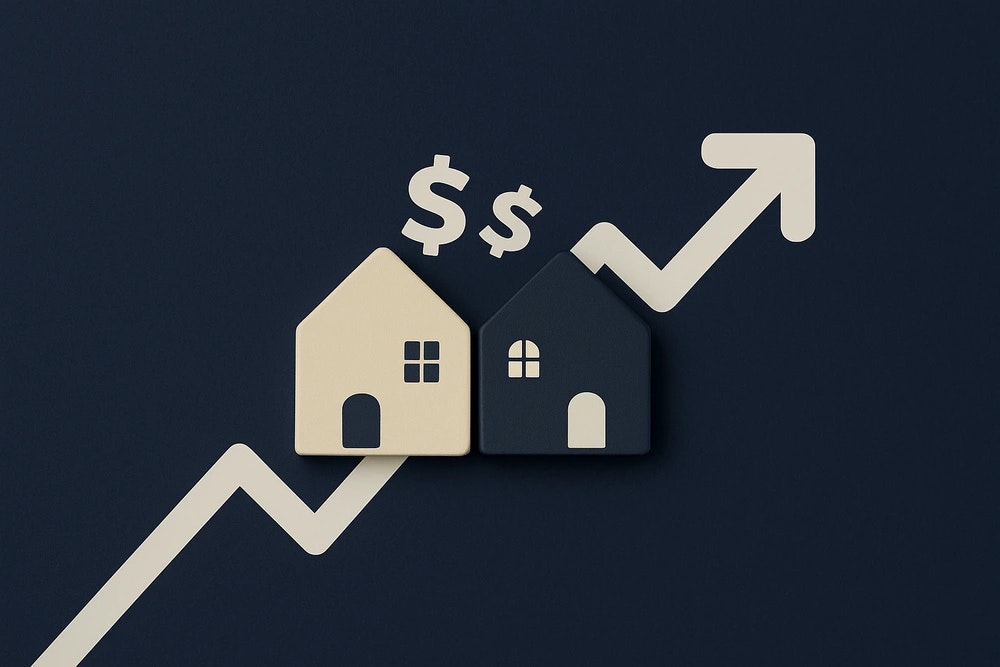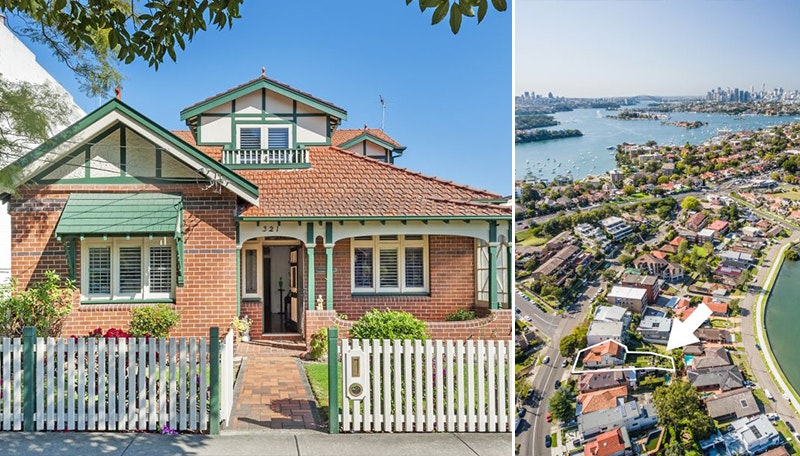Every time the RBA trims the cash rate, the headlines arrive on cue. Consumer confidence surges, auction clearance rates edge higher, and buyers flood back into open homes. The property market, we’re told, is roaring again.
That’s the rate-cut buzz you can see right once again following the third cut landing this year. Auction volumes are starting to climb, sentiment surveys jumped, and respected forecasters are tipping strong gains. Christopher Joye is calling for 10% home price growth over the next 12 months, supported by scarce listings (around 19% below the 5-year average) and a +1.8% lift in national values over the three months to July, the best growth we’ve seen since mid-2024. History also supports the optimism too, with analysis showing that within 24 months of the first cut, home values often rise by double digits.
The near-term pulse was also loud with the Westpac Consumer Sentiment jumping +5.7% in August to 98.5, and home-buyer sentiment leapt +10.5%. Preliminary clearance rates printed around 75% in Sydney and the combined capitals, with auction volumes up by 24.3% week-on-week. Sydney alone hosted about 720 auctions, roughly +30% on the prior week, which is no doubt a sign of the rapidly approaching spring market.
But it pays to look beyond the headlines, because the sizzle in the media can, and often does, conflict with important fundamentals. Let’s take a look at a few of interest right now:
- Final clearance reality. The audited result for NSW ending on August 17 notes a final clearance rate at 54.5% across 950 scheduled, 229 sold prior, 289 under the hammer, 43 after; 124 rescheduled; 191 re-advertised private treaty. In short: more energy, yes; a boom, no.
- Stamp duty has exploded. On a median Sydney house, duty now equals 119.7% of annual household disposable income, up from 44.5% in 2000. Melbourne: 36.5% → 109.3%. Brisbane: 19.5% → 66.3%. Across the eastern capitals, duty has grown 2.7×–3.4× faster than incomes
- Affordability is stretched. Australia’s dwelling value-to-income ratio sat near 8x at the end of 2024 and is projected to increase to 8.4× by 2026, even with more cuts. As Lucy Slade noted in the AFR, the latest cut adds only about +$12k borrowing capacity for a single on average wages and +$24k for a couple, which barely nudges assistance at circa $1.2m average Sydney property price.
- Living standards are sliding. The RBA warns productivity growth has halved from 1.8% down to 0.9% p.a. On current trends, the Productivity Commission estimates a full-time worker will be $14,000 a year worse off by 2035. Monetary policy can’t fix that.
So, we’re watching a market catching a sentiment spike from easier rates while the broader economy is barely moving. However, the most intriguing question that does arise with the backdrop of a spluttering economy, how is it possible that property prices continue to increase? It’s well-known that Australian property doesn’t always move in step with GDP. It has its own drivers.
1) The Credit Tap
Banks lend against rates before wages. Every cut instantly lifts borrowing power, even if incomes haven’t moved.
2) Chronic Undersupply
Vendors are cautious and new supply is thin. Listings sit 19% below the 5-year average, and Cotality notes persistently low inventory supporting values and clearances.
3) Wealth Concentration
Those with equity recycle it. As Andrew Fraser argued writing in the Australian, many retirees now hold sizeable tax-advantaged super alongside tax-advantaged homes, deepening intergenerational gaps that shape who can bid when sentiment turns.
4) Psychology & Herd Behaviour
Headlines move expectations quickly. Westpac shows price expectations are at a cyclical high and FOMO ignites fast when the news flow turns.
The RBA and everyone is hellbent on reducing inflation and keeping it within the target band of 2-3%, however, it appears the media and hoe-owners throw that concern out the window when growth is applied to property prices. Rapidly rising house prices aren’t healthy, especially when finances are already stretched. We’ve found ourselves in such a conundrum that people don’t want properties prices to rise too much for the societal damage yet at the same time, the cost-of-living pressures are at such a level, many rely on property price growth to fund their lifestyle plans.
Can this cycle continue? It seems highly unlikely as rate cut buzz fades. Without real wage growth or productivity gains, affordability ceilings will continue to bite harder. Each upswing becomes narrower, more debt-driven, and more vulnerable to shocks. Property can detach from the economy for a while but not indefinitely. And, here is the quiet subtext from Canberra’s Economic Reform Roundtable:
- Spending growth at 6% p.a. (near 40-year highs ex the pandemic), with the Treasurer positioning the roundtable to “inform three budgets”.
- Voters reject tax hikes (57% say new or higher taxes are the worst option), yet the Productivity Commission is backing a carbon price and a 5% net cashflow tax with full expensing (modelled GDP +$14.6bn; investment +$7.4bn), while the ACTU wants $25bn in new taxes and business wants –25% red tape.
- Philip Lowe says there’s no clear fiscal framework post-COVID and that cost-of-living handouts made the RBA’s disinflation job harder.
- And new tax ideas are on the whiteboard: a 2% wealth tax >$5m (~$41bn/yr), inheritance tax (~$10bn/yr), and scrapping the CGT discount (~$19bn/yr). Politically tough, but the direction of travel is clear if deficits persist.
None of the above underpins a runaway housing boom. It simply means that for prices to run hard from here, households would need to borrow more at the ceiling, while paying record stamp duty, in an economy of weak productivity and declining living standards. Can anyone else explain in plain English if this isn’t a reality?
So where does all of this leave us as we edge into spring, with markets factoring in two, if not, three more rate cuts to mid-2026? Well, we expect more energy, higher engagement, and selective price growth, especially for our a-grade properties in each suburb. That aligns with Joye’s call for houses to outperform and with Cotality’s observation that low inventory is propping clearance rates.
But don’t mistake momentum for a runaway boom. The rate-cut buzz is real; the guardrails of affordability, stamp duty and weak productivity are just as real and remain very relevant. So, our advice is:
- Sellers: Strategy and timing matter. Price to the ledger, recent sales, active buyer movement and not the headlines. Build a genuine pre-auction plan, ensure your property is well-presented and start with momentum.
- Buyers: Don’t let the noise do your bidding. Borrowing power has improved a little; stamp duty and repayments still do the heavy lifting, so focus on quality, and use the increase in listings to your advantage.
Headlines are noisy as confidence sells papers, but constraints set prices. We prefer reliable evidence. Week by week we’re on the ground at opens and auctions, matching the data to what buyers and sellers are actually saying. That’s the mood of the market we share, unvarnished, practical, and real. In a time where old trend lines can no longer be trusted, staying a step ahead matters with straight talk and no gloss.
With spring upon us, a strong pipeline is forming, and strategy will count. Campaigns will need sharp execution to land the right result. If you’re considering a sale or a purchase, let’s talk, we’ll cut through the noise, give you the real picture, and position you to make a smart move.




